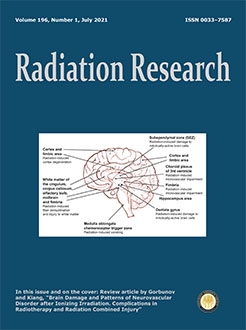Radiation combined injury (RCI, radiation exposure coupled with other forms of injury, such as burn, wound, hemorrhage, blast, trauma and/or sepsis) comprises approximately 65% of injuries from a nuclear explosion, and greatly increases the risk of morbidity and mortality when compared to that of radiation injury alone. To date, no U.S. Food and Drug Administration (FDA)-approved countermeasures are available for RCI. Currently, three leukocyte growth factors (Neupogen®, Neulasta® and Leukine®) have been approved by the FDA for mitigating the hematopoietic acute radiation syndrome. However these granulocyte-colony-stimulating factor (G-CSF) and granulocyte-macrophage colony-stimulating factor (GM-CSF) products have failed to increase 30-day survival of mice after RCI, suggesting a more complicated biological mechanism is in play for RCI than for radiation injury. In the current study, the mitigative efficacy of combination therapy using pegylated (PEG)-G-CSF (Neulasta) and  -citrulline was evaluated in an RCI mouse model. L-citrulline is a neutral alpha-amino acid shown to improve vascular endothelial function in cardiovascular diseases. Three doses of PEG-G-CSF at 1 mg/kg, subcutaneously administered on days 1, 8 and 15 postirradiation, were supplemented with oral
-citrulline was evaluated in an RCI mouse model. L-citrulline is a neutral alpha-amino acid shown to improve vascular endothelial function in cardiovascular diseases. Three doses of PEG-G-CSF at 1 mg/kg, subcutaneously administered on days 1, 8 and 15 postirradiation, were supplemented with oral  -citrulline (1 g/kg), once daily from day 1 to day 21 postirradiation. The combination treatment significantly improved the 30-day survival of mice after RCI from 15% (vehicle-treated) to 42%, and extended the median survival time by 4 days, as compared to vehicle controls. In addition, the combination therapy significantly increased body weight and bone marrow stem and progenitor cell clonogenicity in RCI mice, and accelerated recovery from RCI-induced intestinal injury, compared to animals treated with vehicle. Treatment with
-citrulline (1 g/kg), once daily from day 1 to day 21 postirradiation. The combination treatment significantly improved the 30-day survival of mice after RCI from 15% (vehicle-treated) to 42%, and extended the median survival time by 4 days, as compared to vehicle controls. In addition, the combination therapy significantly increased body weight and bone marrow stem and progenitor cell clonogenicity in RCI mice, and accelerated recovery from RCI-induced intestinal injury, compared to animals treated with vehicle. Treatment with  -citrulline alone also accelerated skin wound healing after RCI. In conclusion, these data indicate that the PEG-G-CSF and
-citrulline alone also accelerated skin wound healing after RCI. In conclusion, these data indicate that the PEG-G-CSF and  -citrulline combination therapy is a potentially effective countermeasure for mitigating RCI, likely by enhancing survival of the hematopoietic stem/progenitor cells and accelerating recovery from the RCI-induced intestinal injury and skin wounds.
-citrulline combination therapy is a potentially effective countermeasure for mitigating RCI, likely by enhancing survival of the hematopoietic stem/progenitor cells and accelerating recovery from the RCI-induced intestinal injury and skin wounds.
BioOne.org will be down briefly for maintenance on 17 December 2024 between 18:00-22:00 Pacific Time US. We apologize for any inconvenience.
How to translate text using browser tools
29 April 2021
PEG-G-CSF and L-Citrulline Combination Therapy for Mitigating Skin Wound Combined Radiation Injury in a Mouse Model
Li Wang,
Min Zhai,
Bin Lin,
Wanchang Cui,
Lisa Hull,
Xianghong Li,
Marsha N. Anderson,
Joan T. Smith,
Maria Victoria Umali,
Suping Jiang,
Juliann G. Kiang,
Mang Xiao
ACCESS THE FULL ARTICLE
<
Previous Article
|

Radiation Research
Vol. 196 • No. 1
July 2021
Vol. 196 • No. 1
July 2021




